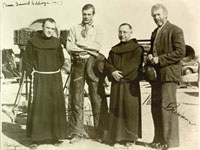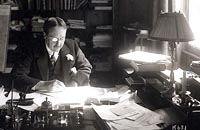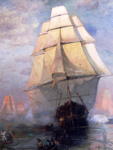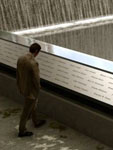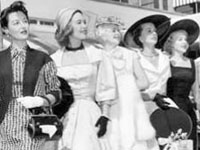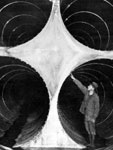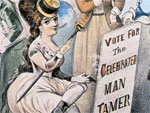Exactly one decade from the events of September 11, 2001, a new memorial is slated to open at Ground Zero. The memorial website offers the expected information on visiting the memorial, as well as a wealth of information which can be of use well outside of the state of New York.
Plan Your Visit is the place to go if you are considering visiting the memorial yourself or taking a class to the site. Note that there are restrictions on items and bag sizes permitted, that the site contains no public restrooms, and reservations are required with the number of group visits per day limited. Prior to the official opening, visitors can view a preview museum, which includes a StoryCorps recording booth for sharing your own 9/11 story. However, there is still a hefty amount of information here for "digital only" visitors. For example, you can read about how names will be grouped on the memorial—by location at the time of the incident, by company affiliation, and by relationships requested by next-of-kin. What does this system say about how we define ourselves today with and against other people and organizations?
In the same section, you can also find a link to a free iPhone 9/11 history application. This app provides images, a timeline, and a tour of the World Trade Center area. The tour can be used to guide an actual walk, or it can be accessed from elsewhere to explore digitally.
About the Memorial provides an overview of the memorial's design and the reasoning behind these artistic and practical choices. This can be used to get your students to question the purpose of memorials and/or how environmental designs can codify collective experience and relate to the values of their time. One simple example is the use of natural elements—trees and water—in this memorial. How do these choices relate to concepts of healing, Romanticism, sustainability, etc.
Collections includes a variety of potentially useful subpages which present a smattering of 9/11 stories with artifact images and links to oral histories, as well as a small list of international tribute projects. The subsection "Contribute" also allows you or your students to upload reaction artwork, photos, videos, or stories.
Finally, there's "Teach + Learn," a section specifically dedicated to 9/11 and contextual education. Read through the key questions for a list of a number of the big issues brought up when discussing 9/11, such as how crisis and fellowship work in tandem and how to avoid the idea of the "Other," as fundamentally unlike oneself. There are also two teaching guides, one on artistic response and another on volunteerism. Another feature is a PDF on talking to children about 9/11. One suggestion listed is that 9/11 be addressed through the stories of individuals rather than themes of good or evil. Finally, this section includes webcasts on Middle Eastern culture, memory and memorials, the aftermath of 9/11, and the building of the 9/11 memorial; an interactive timeline; an interactive version of Lady Liberty, a statue bedecked in 9/11 artifacts and ephemera; and information on domestic and international attacks.
